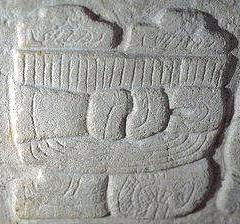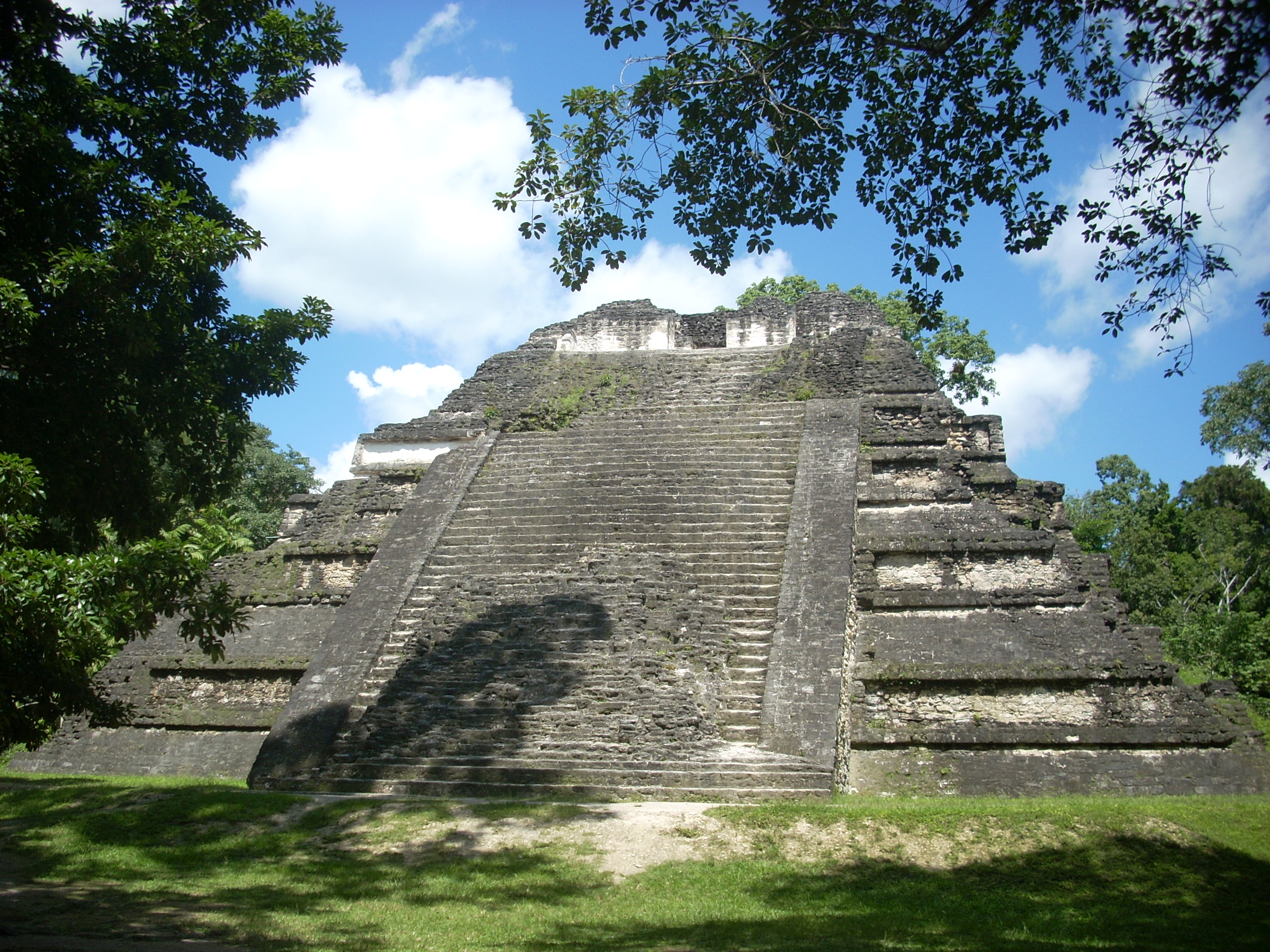|
E-Groups
E-Groups are unique Maya architecture, architectural complexes found among a number of ancient Maya civilization, Maya settlements. They are central components to the settlement organization of Maya sites and, like many other civic and ceremonial buildings, could have served for astronomy, astronomical observations. It has been a common opinion that the alignments incorporated in these structural complexes correspond to the sun's solstices and equinoxes. Recent research has shown, however, that the orientations of these assemblages are highly variable, but pertain to alignment groups that are widespread in the Maya area and materialized mostly in other types of buildings, recording different agriculturally significant dates. Origin of the name E-Groups are named after "Group E" at the Mesoamerican chronology, Classic period site of Uaxactun, which was the first one documented by Mesoamerican archaeologists. At Uaxactun, the Group E complex consists of a long terraced platfor ... [...More Info...] [...Related Items...] OR: [Wikipedia] [Google] [Baidu] |
Maya Architecture
Maya architecture spans several thousands of years, several eras of political change, and architectural innovation before the Spanish colonization of the Americas. Often, the buildings most dramatic and easily recognizable as creations of the Maya peoples are the step pyramids of the Terminal Preclassic Maya period and beyond. Based in general Mesoamerican architectural traditions, the Maya utilized geometric proportions and intricate carving to build everything from simple houses to ornate temples. This article focuses on the more well-known pre-classic and classic examples of Maya architecture. The temples like the ones at Palenque, Tikal, and Uxmal represent a zenith of Maya art and architecture. Through the observation of numerous elements and stylistic distinctions, remnants of Maya architecture have become an important key to understanding their religious beliefs and culture as a whole. Urban design As Maya cities spread throughout the varied geography of Mesoamerica, th ... [...More Info...] [...Related Items...] OR: [Wikipedia] [Google] [Baidu] |
Summer Solstice
The summer solstice, also called the estival solstice or midsummer, occurs when one of Earth's poles has its maximum tilt toward the Sun. It happens twice yearly, once in each hemisphere ( Northern and Southern). For that hemisphere, the summer solstice is the day with the longest period of daylight and shortest night of the year, when the Sun is at its highest position in the sky. Within the Arctic circle (for the Northern hemisphere) or Antarctic circle (for the Southern), there is continuous daylight around the summer solstice. The opposite event is the winter solstice. The summer solstice occurs during summer. This is the June solstice (usually 20 or 21 June) in the Northern hemisphere and the December solstice (usually 21 or 22 December) in the Southern. On the summer solstice, Earth's maximum axial tilt toward the Sun is 23.44°. Likewise, the Sun's declination from the celestial equator is 23.44°. Since prehistory, the summer solstice has been seen as a significant ... [...More Info...] [...Related Items...] OR: [Wikipedia] [Google] [Baidu] |
Stanford University Press
Stanford University Press (SUP) is the publishing house of Stanford University. It is one of the oldest academic presses in the United States and the first university press to be established on the West Coast. It was among the presses officially admitted to the Association of American University Presses (now the Association of University Presses) at the organization's founding, in 1937, and is one of twenty-two current member presses from that original group. The press publishes 130 books per year across the humanities, social sciences, and business, and has more than 3,500 titles in print. History David Starr Jordan, the first president of Stanford University, posited four propositions to Leland and Jane Stanford when accepting the post, the last of which stipulated, “That provision be made for the publication of the results of any important research on the part of professors, or advanced students. Such papers may be issued from time to time as ‘Memoirs of the Leland Stanf ... [...More Info...] [...Related Items...] OR: [Wikipedia] [Google] [Baidu] |
Cambridge University Press
Cambridge University Press is the university press of the University of Cambridge. Granted letters patent by Henry VIII of England, King Henry VIII in 1534, it is the oldest university press A university press is an academic publishing house specializing in monographs and scholarly journals. Most are nonprofit organizations and an integral component of a large research university. They publish work that has been reviewed by schola ... in the world. It is also the King's Printer. Cambridge University Press is a department of the University of Cambridge and is both an academic and educational publisher. It became part of Cambridge University Press & Assessment, following a merger with Cambridge Assessment in 2021. With a global sales presence, publishing hubs, and offices in more than 40 Country, countries, it publishes over 50,000 titles by authors from over 100 countries. Its publishing includes more than 380 academic journals, monographs, reference works, school and uni ... [...More Info...] [...Related Items...] OR: [Wikipedia] [Google] [Baidu] |
Caracol
Caracol is a large ancient Maya archaeological site, located in what is now the Cayo District, of Belize. It is situated approximately south of Xunantunich, and the town of San Ignacio, and from the Macal River. It rests on the Vaca Plateau, at an elevation of above sea-level, in the foothills of the Maya Mountains.Arlen Chase and Diane Chase, 1987 Investigations at the Classic Maya City of Caracol, Belize: 1985-1987. Pre-Columbian Art Research Institute, San Francisco. Long thought to be a tertiary center, it is now known that the site was one of the most important regional political centers of the Maya Lowlands during the Classic Period. Caracol covered approximately ,Arlen Chase and Diane Chase 2009 Interpreting the Maya “Collapse”: Continued Investigation of Residential Complexes in and near Caracol’s Epicenter: 2009 Field Report of the Caracol Archaeological Project. http://caracol.org/reports/2009.php , accessed November 20, 2011 covering an area much larger than ... [...More Info...] [...Related Items...] OR: [Wikipedia] [Google] [Baidu] |
Belize
Belize (; bzj, Bileez) is a Caribbean and Central American country on the northeastern coast of Central America. It is bordered by Mexico to the north, the Caribbean Sea to the east, and Guatemala to the west and south. It also shares a water boundary with Honduras to the southeast. It has an area of and a population of 441,471 (2022). Its mainland is about long and wide. It is the least populated and least densely populated country in Central America. Its population growth rate of 1.87% per year (2018 estimate) is the second-highest in the region and one of the highest in the Western Hemisphere. Its capital is Belmopan, and its largest city is the namesake city of Belize City. Belize is often thought of as a Caribbean country in Central America because it has a history similar to that of English-speaking Caribbean nations. Indeed, Belize’s institutions and official language reflect its history as a British colony. The Maya civilization spread into the area of Beli ... [...More Info...] [...Related Items...] OR: [Wikipedia] [Google] [Baidu] |
Cerros
Cerros is an Eastern Lowland Maya archaeological site in northern Belize that functioned from the Late Preclassic to the Postclassic period. The site reached its apogee during the Mesoamerican Late Preclassic and at its peak, it held a population of approximately 1,089 people. The site is strategically located on a peninsula at the mouth of the New River where it empties into Chetumal Bay on the Caribbean coast. As such, the site had access to and served as an intermediary link between the coastal trade route that circumnavigated the Yucatán Peninsula and inland communities. The inhabitants of Cerros constructed an extensive canal system and utilized raised-field agriculture. Site organization The core of the site immediately abuts the bay and consists of several relatively large structures and stepped pyramids, an acropolis complex, and two ballcourts. Bounding the southern side of the site is a crescent-shaped canal network that encloses the central portion of the site and ... [...More Info...] [...Related Items...] OR: [Wikipedia] [Google] [Baidu] |
Petén Basin
The Petén Basin is a geographical subregion of Mesoamerica, primarily located in northern Guatemala within the Department of El Petén, and into Campeche state in southeastern Mexico. During the Late Preclassic and Classic periods of pre-Columbian Mesoamerican chronology many major centers of the Maya civilization flourished, such as Tikal and Calakmul. A distinctive Petén-style of Maya architecture and inscriptions arose. The archaeological sites La Sufricaya and Holmul are also located in this region. History By the first half of the 1st millennium BCE, the Petén and Mirador Basin of this region were already well-established with a number of monumental sites and cities of the Maya civilization. Significant Maya sites of this Preclassic era of Mesoamerican chronology include Nakbé, El Mirador, Naachtun, San Bartolo and Cival in the Mirador Basin. Classic Period Later, Petén became the heartland of the Maya Classic Period (c. 200 – 900 CE). At its height aroun ... [...More Info...] [...Related Items...] OR: [Wikipedia] [Google] [Baidu] |
Tikal
Tikal () (''Tik’al'' in modern Mayan orthography) is the ruin of an ancient city, which was likely to have been called Yax Mutal, found in a rainforest in Guatemala. It is one of the largest archeological sites and urban centers of the pre-Columbian Maya civilization. It is located in the archeological region of the Petén Basin in what is now northern Guatemala. Situated in the department of El Petén, the site is part of Guatemala's Tikal National Park and in 1979 it was declared a UNESCO World Heritage Site. Tikal was the capital of a conquest state that became one of the most powerful kingdoms of the ancient Maya. Though monumental architecture at the site dates back as far as the 4th century BC, Tikal reached its apogee during the Classic Period, c. 200 to 900. During this time, the city dominated much of the Maya region politically, economically, and militarily, while interacting with areas throughout Mesoamerica such as the great metropolis of Teotihuacan in the dista ... [...More Info...] [...Related Items...] OR: [Wikipedia] [Google] [Baidu] |
Mundo Perdido, Tikal
The Mundo Perdido (Spanish for "Lost World") is the largest ceremonial complex dating from the Preclassic period at the ancient Maya city of Tikal, in the Petén Department of northern Guatemala.Martin and Grube 2000, p.28. The complex was organised as a large E-Group astronomical complex consisting of a pyramid aligned with a platform to the east that supported three temples. The Mundo Perdido complex was rebuilt many times over the course of its history. By AD 250–300 its architectural style was influenced by the great metropolis of Teotihuacan in the Valley of Mexico, including the use of the ''talud-tablero'' form. During the Early Classic period (c. 250–600) the Mundo Perdido became one of the twin foci of the city, the other being the North Acropolis.Martin and Grube 2000, p.29. From AD 250 to 378 it may have served as the royal necropolis. The Mundo Perdido complex was given its name by the archaeologists of the University of Pennsylvania. The large plaza centred upon ... [...More Info...] [...Related Items...] OR: [Wikipedia] [Google] [Baidu] |
Seibal
Seibal (), known as El Ceibal in Spanish, is a Classic Period archaeological site of the Maya civilization located in the northern Petén Department of Guatemala, about 100 km SW of Tikal. It was the largest city in the Pasión River region. The site was occupied from the Preclassic Period through to the Terminal Classic, with a significant hiatus. The principal phase of occupation dates to the Late Preclassic (400 BC – AD 200), followed by a decline in the Early Classic (AD 200–600). Seibal experienced a significant recovery in the Terminal Classic immediately prior to its complete abandonment, reaching its second peak from about 830 to 890, with a population estimated at 8–10,000 people. The dates on the stelae at Seibal are unusually late, with monuments still being dedicated after the Classic Maya collapse had engulfed most of the Petén region. Many of Seibal's late monuments show artistic influence from central Mexico and from the Gulf Coast of Mex ... [...More Info...] [...Related Items...] OR: [Wikipedia] [Google] [Baidu] |
Winter Solstice
The winter solstice, also called the hibernal solstice, occurs when either of Earth's poles reaches its maximum tilt away from the Sun. This happens twice yearly, once in each hemisphere ( Northern and Southern). For that hemisphere, the winter solstice is the day with the shortest period of daylight and longest night of the year, when the Sun is at its lowest daily maximum elevation in the sky. Either pole experiences continuous darkness or twilight around its winter solstice. The opposite event is the summer solstice. The winter solstice occurs during the hemisphere's winter. In the Northern Hemisphere, this is the December solstice (usually 21st or 22nd December) and in the Southern Hemisphere, this is the June solstice (usually 20th or 21st of June). Although the winter solstice itself lasts only a moment, the term also refers to the day on which it occurs. The term midwinter is also used synonymously with the winter solstice, although it carries other meanings as we ... [...More Info...] [...Related Items...] OR: [Wikipedia] [Google] [Baidu] |








